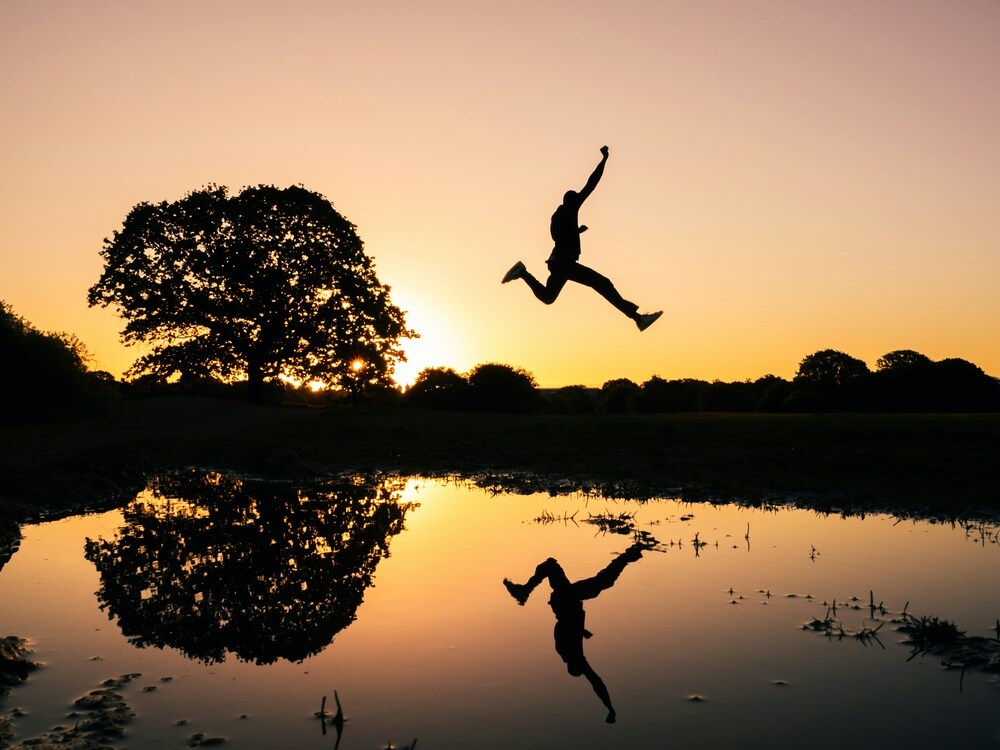Non Copyright Music Action
Explore the dynamic world of Non Copyright Music: a gateway to creativity and freedom in the digital era. Uncover how this transformative movement reshapes creation, sharing, and enjoyment of music, empowering artists and creators globally. Step into the future of music with us—a journey toward innovation and inclusivity.
There's more music!
That's only the tip of the iceberg. We have many more songs, all available with our lifetime licenses:
Why you should purchase from us
Discover the simplest and most cost-effective way to secure a lifetime license – pay once and never worry about account creation or password hassles again! Our licenses are your ticket to the best music, valid for any project, forever.
Get your license now!Use our music on...
Music Plans
Pay once, use for a lifetime
You’ll never have to worry again about copyrights or claims.
Starter
Suited for personal projects and social media (Youtube not included)
$49 / forever
Buy plan- Personal projects
- Social Media
- Clients work
- Online Advertising
- TV, Cinema and Radio
Personal
Most popular
Ideal for Youtube. apps, podcast and gameplays. Unlimited downloads and channels.
$99 / forever
Buy plan- Social Media
- Youtube & Streaming
- Apps & Videogames
- Clients work
- Online Advertising
- TV, Cinema and Radio
Business
Ideal if you're a freelancer or a business. All covered, unlimited downloads and channels
$199 / forever
Buy plan- Any Possible Use Case
- Clients work
- Online Advertising
- TV, Cinema and Radio
👉No need to create an account
👉A lifetime license, forever
👉No more ‘clearing’ channels
We currently offer 241 songs from 30 different genres
Testimonials
Don't take our word for it
“I was skeptical at first but Legis Music has exceeded my expectations. Their music library is diverse and constantly updated, making it easy to find the perfect track for any project. Plus, the peace of mind that comes with that royalty-free license is priceless.”

“@legismusic has made my life as a video editor so much easier. The lifetime license is a no-brainer and the fact that I don’t have to worry about clearing channels or getting copyright strikes is a huge weight off my shoulders. The affordable cost and extensive music library make it the go-to source for all my music needs.”

“As a podcast creator, finding the right music to complement my content can be a challenge, but Legis Music has made it so easy. Their lifetime licenses are affordable and the fact that I can use the music on Spotify and Apple Music is a huge relief. A no-brainer for any podcaster.”

“I was blown away by the value offered by Legis Music's lifetime royalty-free licenses. The cost is incredibly affordable and having the peace of mind to use the music for my clients without worrying about copyright strikes is priceless. I highly recommend this to anyone in need of music for their projects.”

“It was important for me to find a cost-effective solution for my company’s music needs. Legis Music’s business plan was the perfect fit and the lifetime licenses have been a game-changer. We can now use the music for all of our projects without any worries about copyright strikes. Highly recommend to any business in need of music.”

“The quality of the music is top-notch, and the licensing terms are crystal clear, saving me from any copyright hassles.”

“Legis Music has improved the way I create content. The selection of royalty-free music is great and the quality is unbeatable. I can now add the perfect sound to my videos without any stress or added costs. Highly recommended!”

“I've been using Legis Music for my YouTube channel for the past few months, and I couldn't be happier with the service.”

“As a video game creator, having access to high-quality music for my games is crucial. @legismusic lifetime licenses are a steal and the fact that I don’t have to worry about any type of copyrights in the future is a huge relief. The extensive library makes it easy to find the perfect tracks for my games.”

“The audio quality is excellent, and I've never experienced any copyright issues since using their music. The licensing terms are transparent, which is essential for content creators like myself.”

“As a freelance producer, I need to keep costs down and Legis Music has been a huge help for me. The user-friendly platform and affordable pricing make it easy for me to access top-notch music for my clients. Anyone in need of royalty-free music should give it a shot.”

Definition of non copyright music
Non Copyright Music refers to music that is not protected by copyright laws, allowing it to be freely used, reproduced, and distributed without requiring permission from or payment to the original creator.
This category encompasses a variety of music types, including public domain music, music under Creative Commons licenses, and royalty-free music.
Such music is invaluable for creators seeking soundtracks for videos, podcasts, and other media projects without the legal complexities or costs associated with copyrighted music.
Importance and usage in today’s digital age
In today’s digital era, the demand for accessible, legal music for multimedia projects is higher than ever.
With the explosion of content creation across platforms such as YouTube, TikTok, and podcasts, creators need music that enhances their work without infringing on copyright laws.
Non Copyright Music serves this need, offering a versatile and legally safe soundtrack option for everything from educational materials and corporate presentations to entertainment content and personal projects.
The importance of Non Copyright Music extends beyond mere convenience.
It democratizes access to quality music for creators across the globe, regardless of their budget or legal expertise.
This accessibility fosters creativity and innovation, allowing individuals and companies to tell their stories, market their products, and express themselves with the support of a fitting musical backdrop.
Moreover, the use of Non Copyright Music plays a crucial role in education and advocacy, enabling institutions and non-profits to communicate their messages effectively without the burden of copyright restrictions.
It also supports emerging artists and musicians who can gain exposure and build their audience by offering their work under non-copyright or less restrictive licenses.
In conclusion, non copyright music is a cornerstone of modern creative expression, enabling a symbiotic relationship between artists offering their music freely or under flexible terms and creators who need quality, accessible music.

Historical context
Origins of copyright laws
The concept of copyright law dates back several centuries, initially established to protect the rights of authors and creators over their literary and artistic works.
The Statute of Anne, passed in Great Britain in 1710, is often cited as the first true copyright law, designed to encourage creativity and innovation by granting authors exclusive rights to their works for a limited time.
This principle of temporary exclusivity has underpinned copyright law across the world, evolving over time to adapt to new forms of expression and technology.
Evolution of music copyright through time
Music copyright has followed a parallel path, with composers and publishers seeking to protect their works from unauthorized copies and performances.
As technology advanced, from printed sheet music to recorded sound and digital formats, copyright laws expanded and adapted.
The 20th century saw significant developments, with the introduction of mechanical rights, performance rights, and, eventually, digital rights, reflecting the changing ways people accessed and enjoyed music.
The rise of non copyright music
The digital revolution and the internet’s growth have challenged traditional copyright frameworks, leading to debates over copyright’s role in a connected world where sharing and remixing content has become ubiquitous.
This environment set the stage for the emergence of non copyright music as a response to the need for more flexible, shareable content.
Artists and creators began exploring alternative licensing models, such as Creative Commons, to allow their music to be freely used while still maintaining some control over their work.
This shift marked a significant transformation in how music is shared, consumed, and valued in the digital age.
Types of non copyright music
Public Domain Music
Music in the public domain is defined as works not protected by copyright, either because copyrights have expired, were forfeited, or were never applicable.
Such music can be freely used by anyone for any purpose, making it a valuable resource for creators.
Classical compositions by composers like Bach and Mozart often fall into this category, providing a rich tapestry of sound for modern projects.
Creative Commons licenses
Creative Commons licenses offer a modern solution for artists to share their music while still retaining some rights.
These licenses come in various forms, allowing creators to specify conditions such as attribution, non-commercial use, no derivatives, and share alike.
This flexibility has made Creative Commons a popular choice for both musicians and content creators, facilitating a culture of sharing and collaboration.
Royalty-Free music
Royalty-free music is a licensing model where music is purchased once, and the buyer is free to use it multiple times without paying additional fees.
It’s important to note that “royalty-free” does not mean “free music” but rather indicates that the ongoing, recurring fees typically associated with music licensing do not apply.
This model is particularly appealing to businesses and creators looking for cost-effective, legal music solutions for their projects.
Open source music
Open source music takes inspiration from the open-source software movement, aiming to make music creation and distribution as collaborative and accessible as possible.
Artists release their music under licenses that allow others to remix, adapt, and build upon their work, often requiring only attribution in return.
This approach not only enriches the creative landscape but also fosters a community of musicians and creators who support and inspire each other’s work.
In exploring the historical context and the different types of Non Copyright Music, we gain a deeper understanding of the complexities and nuances involved in using music in creative projects.
The evolution from strict copyright control to more open, flexible licensing models reflects broader changes in society’s relationship with art and creativity, highlighting the ongoing dialogue between protecting creators’ rights and fostering innovation and sharing in the digital age.
Sourcing non copyright music
Recommended platforms and libraries
Identifying and accessing non-copyright music can be straightforward with the right resources.
Various platforms and libraries specialize in providing music that falls under public domain, Creative Commons licenses, or is royalty-free.
Websites like Free Music Archive , Jamendo , and Incompetech offer extensive catalogs of music across different genres and licenses.
Additionally, platforms like YouTube Audio Library and Vimeo Music Store provide tools for content creators to find music that is safe to use in their projects, often with clear guidelines on how to attribute the music correctly.
How to ensure the music is truly non copyright
Caution is key when sourcing non-copyright music, as misattribution or misuse can lead to legal complications.
Always verify the license of each piece of music directly on the platform where it is hosted.
Look for specific licensing information that confirms the music is indeed free to use for your intended purpose.
If in doubt, contact the artist or the platform’s support team for clarification.
Keeping records of the license agreement and any communication can be invaluable for verifying the legality of music use in the future.
Pitfalls to avoid
One common pitfall is assuming all “free” music is free of copyright restrictions.
Terms like “free to use” can be misleading without clear license information.
Another mistake is neglecting to provide proper attribution when required by the license, which can lead to copyright claims or even legal action.
Additionally, using music labeled as “royalty-free” without understanding the specific terms of the license can also lead to unexpected costs or restrictions.
Legal aspects
Understanding Different Licensing Agreements
Grasping the nuances of various licensing agreements is crucial for legally using non-copyright music.
Creative Commons licenses range from the most permissive (CC BY) to the most restrictive (CC BY-NC-ND), each with its own requirements and limitations.
Royalty-free licenses, on the other hand, typically involve a one-time payment for lifetime use, but the details can vary widely between providers.
Understanding the specific terms of these licenses ensures that music is used appropriately and ethically.
Legal implications of using non copyright music
Using non-copyright music improperly can have significant legal implications, including copyright infringement claims, takedown notices, and even lawsuits.
It’s essential to understand that even within the realm of non-copyright music, rights such as moral rights (the right to be credited) and rights of publicity (the right to control the commercial use of one’s likeness) may still apply.
Ignorance of these rights and the specifics of licensing agreements does not exempt one from legal responsibility.
Creative implications
Impact on musicians and creators
The landscape of non-copyright music has profound implications for both musicians and content creators.
Musicians who choose to release their work under non-copyright or flexible licenses often find that it can lead to increased exposure and audience growth.
This approach can serve as a powerful marketing tool, allowing their music to reach audiences that might not have been accessible through traditional copyright-restricted channels.
For content creators, access to a diverse range of music without the fear of legal repercussions unleashes creative freedom, enabling more dynamic and engaging content production.
How artists can protect their work while sharing
Artists seeking to share their work widely without relinquishing all control over their creations can take several steps.
Utilizing Creative Commons licenses allows them to specify conditions under which their music can be used, such as requiring attribution or prohibiting commercial use.
Regularly engaging with their audience and the communities that use their music can also help artists maintain visibility and control over how their work is perceived and utilized.
Collaborations and remix culture
The availability of non-copyright music fosters a vibrant remix culture, encouraging collaboration among artists and creators across different mediums.
This culture not only promotes creative expression but also innovation, as artists build upon each other’s work, often leading to unexpected and groundbreaking outcomes.
Such collaborations can transcend geographical and cultural boundaries, creating a global community of artists united by a shared passion for music and creativity.
Economic impact
The role of non copyright music in the music industry
Non-copyright music plays a crucial role in democratizing access to music and has a significant impact on the music industry’s economics.
By providing an alternative to the traditional copyright model, it challenges the industry to adapt and find new revenue models.
For many independent artists, it opens up opportunities for monetization through direct support from fans, partnerships, and alternative distribution channels.
Monetization models for non copyright music
While non-copyright music is freely accessible, it does not mean artists cannot monetize their work.
Models such as donations, crowdfunding, and subscription-based services allow fans to support artists directly.
Additionally, some artists leverage the exposure gained from non-copyright distribution to sell merchandise, offer paid performances, or license their music for commercial projects under different terms.
Technological advancements
How technology is changing the landscape of non copyright music
Technological advancements are rapidly transforming how non-copyright music is created, shared, and discovered.
Artificial Intelligence (AI) and machine learning algorithms are being used to compose music that can be freely distributed without copyright concerns.
Blockchain technology offers new ways to track music usage and facilitate direct transactions between artists and users, potentially streamlining licensing and attribution processes.
The role of AI and algorithms in creating and distributing non copyright music
AI-generated music is becoming increasingly sophisticated, raising questions about copyright and ownership in the context of non-human creators.
This technology has the potential to produce an infinite amount of non-copyright music, customized to specific moods, styles, or applications.
Meanwhile, algorithms play a crucial role in distributing music, with platforms using sophisticated recommendation systems to connect creators with the perfect soundtrack for their projects.
In summary, the realms of creativity, economics, and technology intersect uniquely within the sphere of non-copyright music.
The creative implications foster a culture of collaboration and innovation, the economic impact challenges traditional industry models and offers new monetization avenues, and technological advancements continuously reshape the landscape, creating new opportunities and challenges for artists and creators alike.
Conclusion
The exploration of non-copyright music encompasses a vast terrain, from its legal foundations and sourcing to its creative, economic, and technological dimensions.
This journey reveals a dynamic landscape where music transcends traditional boundaries, fostering an environment rich in creativity, collaboration, and innovation.
Non-copyright music, in its various forms, plays a pivotal role in today’s digital age, democratizing access to musical resources for creators and audiences worldwide.
It challenges conventional notions of music ownership and copyright, pushing the boundaries of how music is created, shared, and experienced.
The movement towards more open forms of music distribution and licensing reflects a broader shift in society’s relationship with artistic works, emphasizing accessibility, sharing, and community over exclusivity and control.
For musicians and creators, the rise of non-copyright music offers both opportunities and challenges.
It opens up new avenues for exposure, audience engagement, and even monetization, while also demanding a nuanced understanding of legal and ethical considerations.
The ability to navigate this landscape is crucial for leveraging the benefits of non-copyright music while respecting the rights and intentions of all involved.
Technological advancements continue to reshape the field, introducing tools and platforms that facilitate the creation, discovery, and use of non-copyright music.
As technology progresses, so too will the ways in which music is composed, distributed, and consumed, likely blurring the lines between creators and users even further.
In summary, non-copyright music represents more than just a legal category or a set of licensing terms.
It embodies a vision of music as a universal language of expression, accessible to all and bound by a collective desire to create, share, and inspire.
The journey through the complexities of non-copyright music not only illuminates the challenges and opportunities of our current era but also offers a glimpse into the potential for a more inclusive and creative future in music.